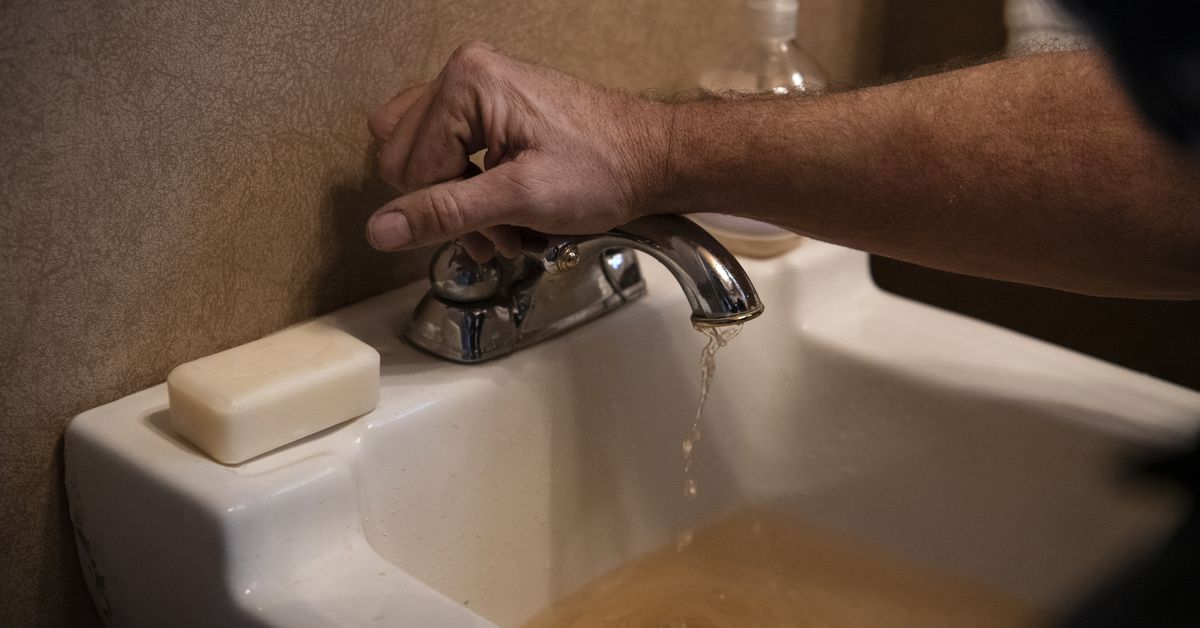Left out of boil water orders, some Texans may need to test wells
Source: The Verge added 24th Feb 2021Unlike millions of Texans who received boil water notices from utility companies, families who rely on private wells have been left to figure out for themselves whether their water is safe to drink in the wake of last week’s deep freeze.
“There’s no warning put out there in the press for what these homeowners who have their own water supply, what they should be doing in these scenarios to protect themselves and their family,” says Jackie Young-Medcalf, executive director of the nonprofit Texas Health and Environment Alliance.
Bacteria and contaminants can find their way into cracks in pipes that burst after freezing. As a result, millions of people on public water systems were told by utilities to boil their tap water after frigid temperatures wreaked havoc on Texas’ infrastructure last week.
But more than 1.3 million Texans aren’t connected to public water utilities, and instead depend on their own wells for their drinking water, according to the state’s Groundwater Protection Committee. Even those official numbers can easily underestimate how many wells there really are and who relies on them, according to Young-Medcalf, because people don’t always register wells that they dig.
Wells that might have been most at risk recently in Texas are older wells with shallow piping. These would have been more exposed to the cold than deeper wells and probably don’t have as much protective casing. Within a private water system, pipes are most likely to have sustained damage, compared to other pieces of equipment, experts say. Any pipes that ruptured above ground should be repaired but aren’t as likely to let in contaminants. Breaks that happen underground are less likely but potentially more dangerous.
“If you’ve had pipes that are broken and they’re in the ground — or worse, were flooded or underwater — then you’d want to repair that and test your water first before you drink it,” says Steven Wilson, a groundwater hydrologist at the University of Illinois at Urbana-Champaign. He developed a free class on well maintenance that’s available online. Texas A&M University’s Texas Well Owners Network offers similar resources.
Young-Medcalf is especially concerned about people who rely on well water and live in places where there’s a history of toxins polluting soil and groundwater. She says she’s heard from several people this week who are concerned about their well water and live near a Superfund site called the Jones Road Groundwater Plume just outside Houston. Superfund sites are places that have been so polluted that the federal government placed it on a “National Priorities List” for cleanup.
“Folks have been reporting to [us] that their water has particles in it and that their water is varying shades of yellow and brown,” says Young-Medcalf. “When multiple groundwater well owners are reporting these observations in their water you have to think, ‘What’s in the environment that made their way into their water system?”
How your water looks and smells isn’t necessarily the best indicator of whether it’s safe to drink. Naturally occurring tannins and silica in groundwater can give it a slight color, even if it is safe. On the other hand, some dangerous contaminants are colorless, tasteless, and odorless.
“Now if your water’s always been perfectly clear and all of a sudden it has a color, then you probably want to get it tested, but it doesn’t mean you should panic,” says Wilson.
Luckily, last week’s snowfall and resulting runoff after it melted weren’t likely to cause as much damage to local Superfund sites as Hurricane Harvey did in 2017, Young-Medcalf says. But she’s still concerned about toxins that already surrounded existing groundwater wells and just needed a break to find their way into people’s home water systems — especially near Jones Road.
The Environmental Protection Agency tells The Verge that it is assessing Superfund sites that might have been affected by severe weather last week to make sure they aren’t a danger to anyone. Of 16 assessed so far (there are 68 in Texas), “None of these sites report any offsite release or impacts to water systems,” a spokesperson told The Verge in an email on February 22nd. The EPA hasn’t responded to The Verge’s query about the Jones Road site specifically.
The best way for any well owner to keep their drinking water safe is to learn more about their well and test it annually, regardless of whether there’s been severe weather or their proximity to a polluted area. The Texas Commission on Environmental Quality has a list of accredited laboratories that provide well testing. The commission also has resources to help households find well reports for their property. A well report or “well log” can give an owner more information about the well, like how deep it is, how and when it was built, and what materials surround it — all information that might be able to point to any vulnerabilities a well has.
“There’s a list of things that can cause a well not to be properly sealed anymore,” Wilson says. “So it’s good to just test annually to give you that confidence that your well is still performing the way it’s supposed to.”
brands: Area Best Built Especially First It local Million other Underestimate WAS media: 'The Verge'
Related posts
Notice: Undefined variable: all_related in /var/www/vhosts/rondea.com/httpdocs/wp-content/themes/rondea-2-0/single-article.php on line 88
Notice: Undefined variable: all_related in /var/www/vhosts/rondea.com/httpdocs/wp-content/themes/rondea-2-0/single-article.php on line 88
Related Products
Notice: Undefined variable: all_related in /var/www/vhosts/rondea.com/httpdocs/wp-content/themes/rondea-2-0/single-article.php on line 91
Warning: Invalid argument supplied for foreach() in /var/www/vhosts/rondea.com/httpdocs/wp-content/themes/rondea-2-0/single-article.php on line 91
